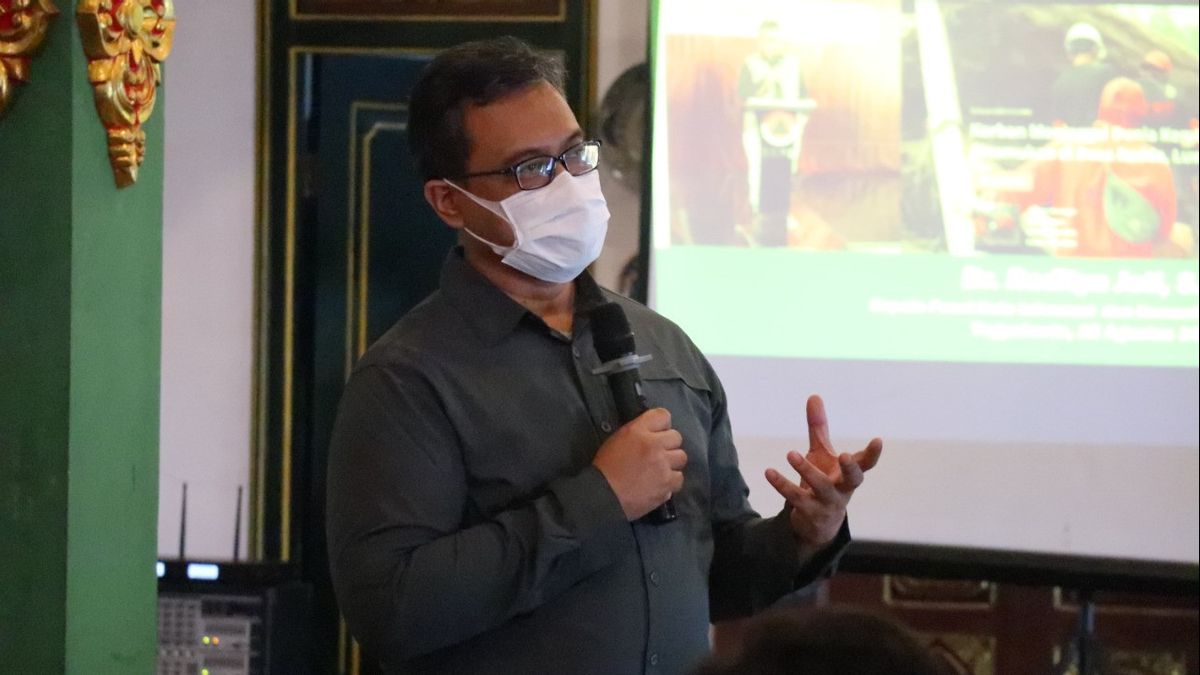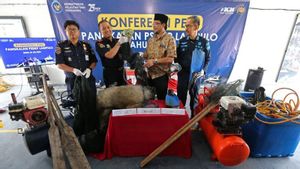JAKARTA - The National Disaster Management Agency (BNPB) recorded 1,928 disasters that occurred in Indonesia in the period from January 1 to August 30.
In details, there are earthquakes that have occurred 12 times, 5 volcanic eruptions, 256 forest and land fires, 16 droughts, 726 floods, 367 landslides, 521 tornadoes, and 24 tidal waves and abrasions.
Head of the BNPB Disaster Data, Information and Communication Center, Raditya Jati said, apart from natural disasters, Indonesia has also experienced non-natural disasters, namely the COVID-19 pandemic which has only occurred once and is still ongoing.
"Almost all disasters or 99 percent of disasters occur are triggered by hydrometeorology. These disasters are the impact of phenomena such as strong winds, heavy rains and high waves," Raditya said in a virtual discussion, Monday, August 31.
As for the impact of natural disasters from January 1 to August 30, 3.8 million people suffered and were displaced, 266 people died, 24 people disappeared, and 421 people were injured.
"Meanwhile, the impact that occurred was damage to 18,174 damaged houses, 345 educational facilities, 409 religious facilities and 35 health facilities," said Raditya.
Furthermore, Raditya said that the most disaster events occurred in Java Island. The number of victims of hatred in Java Island, Java Island is also the highest. Given, the island of Java is inhabited by a fairly large population.
"Therefore, the vulnerability or risk of disaster in Java Island is higher than in areas that are still natural or have a small population," he explained.
Disaster distribution per district / city. There are five districts / cities which are relatively the highest experiencing disasters. The five districts / cities are Bogor, Cilacap, Sumedang, Serang, and Semarang.
Then, when compared to 2019, there was a decrease in the incidence of disasters and their impact.There was a 27 percent decrease in disaster events, 43 percent of victims died and missing, 74 percent of victims were injured, 25 percent suffered and were displaced, and 22 percent of houses were damaged. .
Raditya continued, the capacity or capacity of the community regarding disaster management has begun to increase. As well as increased support for infrastructure and spatial planning that makes the environment better.
"These efforts must be made to anticipate or avoid higher risks before a disaster occurs. Most importantly, how can we manage risks before a disaster occurs," he said.
The English, Chinese, Japanese, Arabic, and French versions are automatically generated by the AI. So there may still be inaccuracies in translating, please always see Indonesian as our main language. (system supported by DigitalSiber.id)













